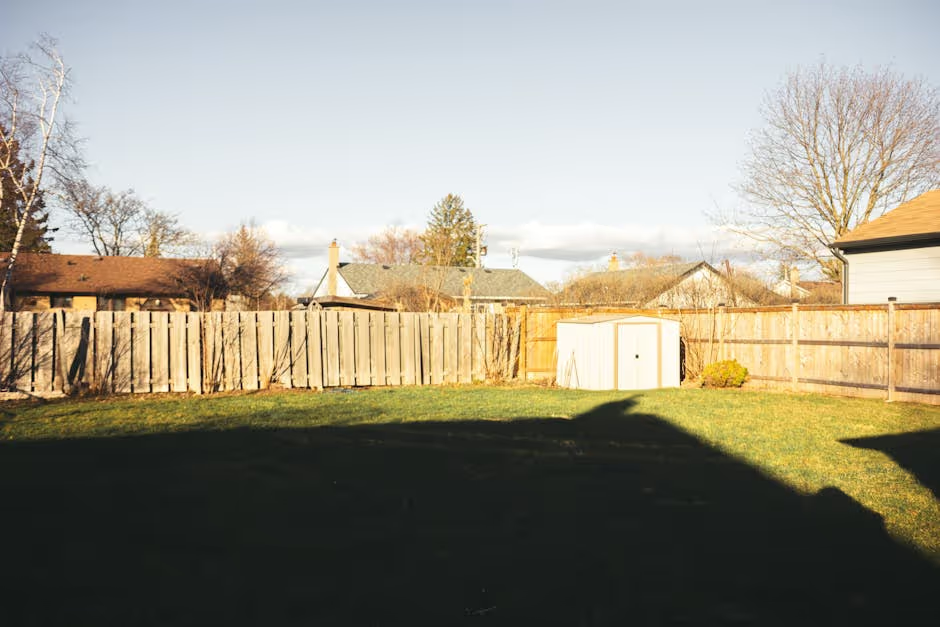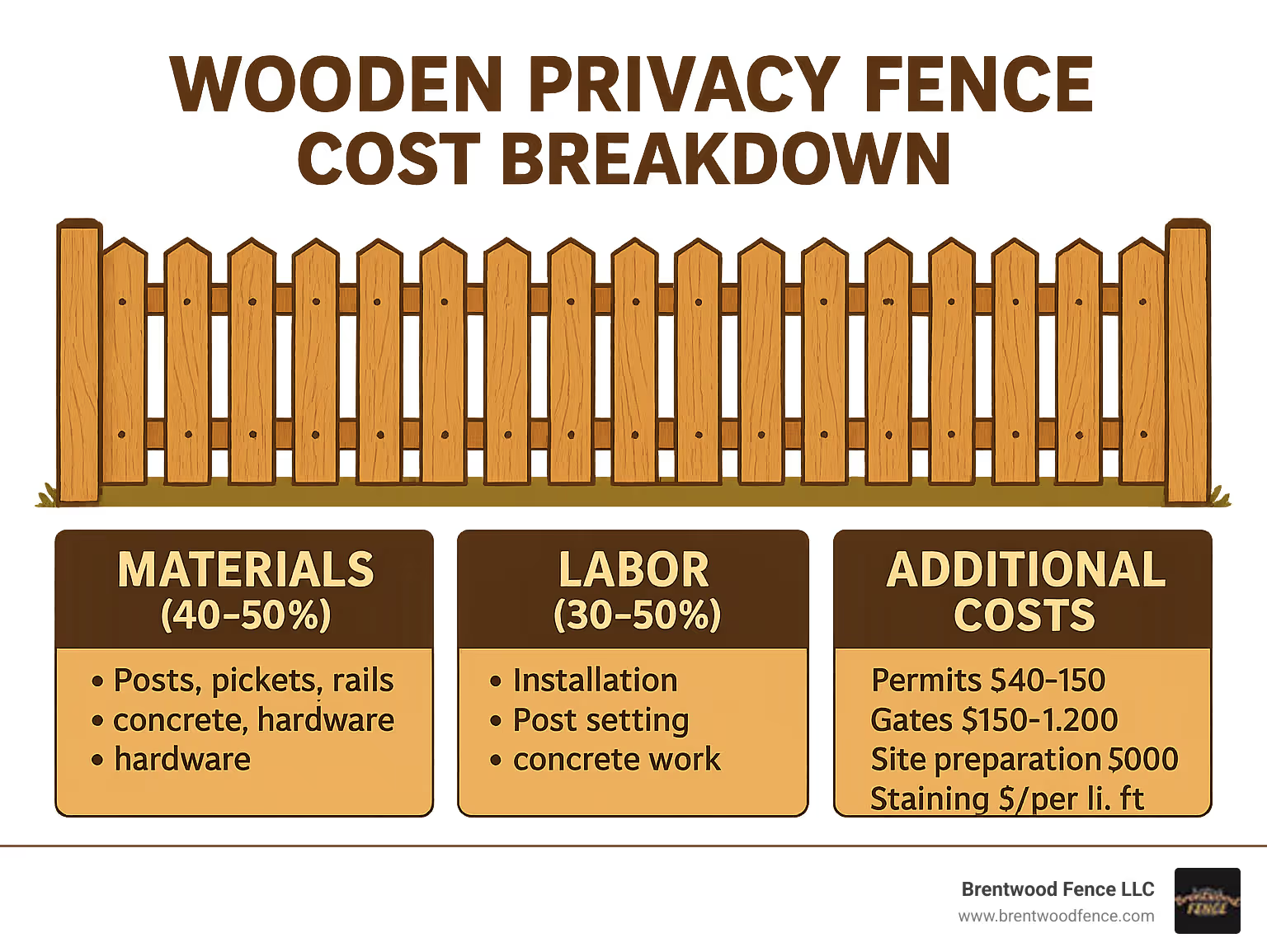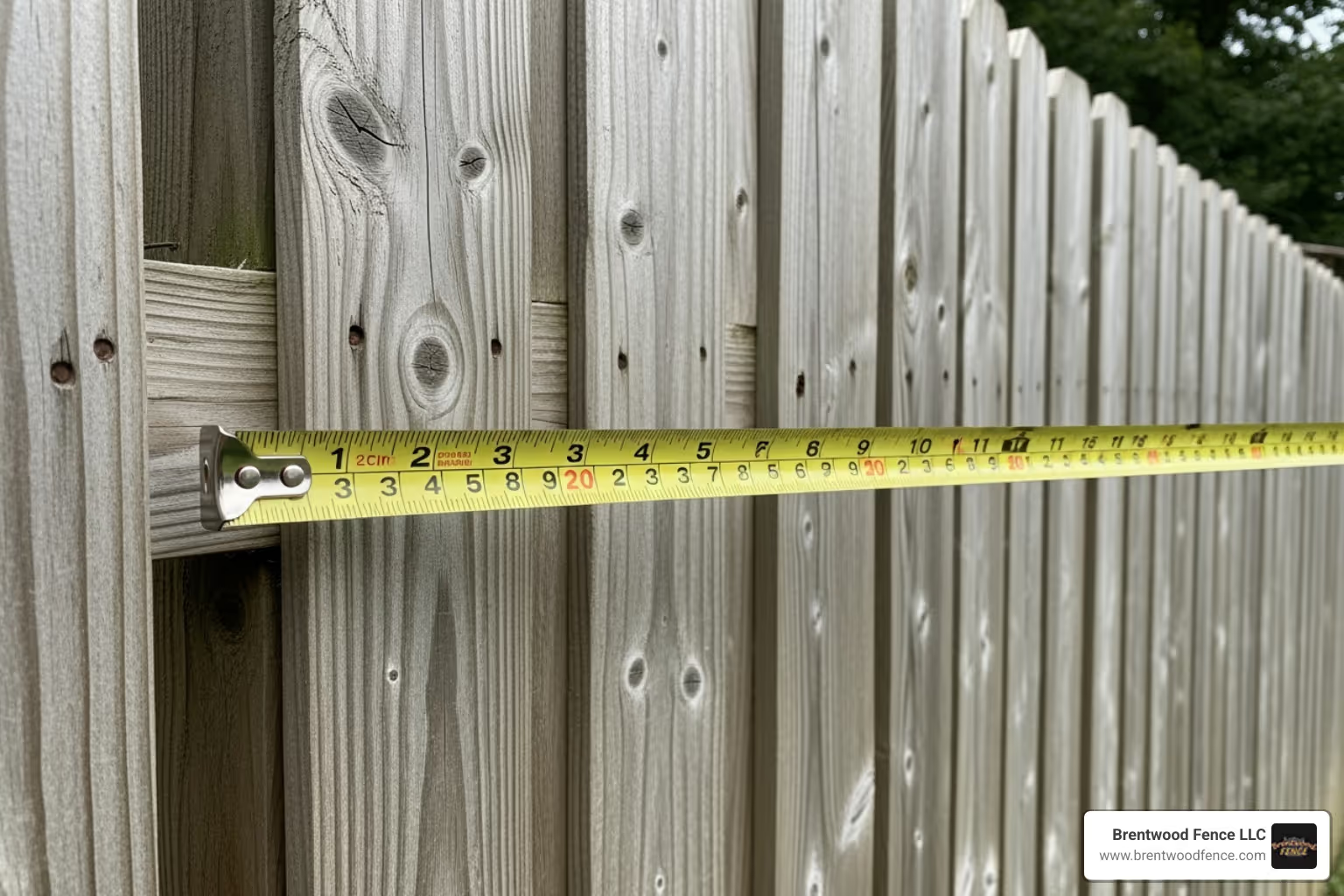Blog Content
6
Oct
2025

A new wooden privacy fence is more than just a boundary line; it's a significant upgrade to your home's security, aesthetic appeal, and overall value. When homeowners in New Hampshire and Massachusetts start planning for a new fence, one of the first questions they ask is, \"What's this going to cost?\" The cost of a wooden privacy fence installation typically ranges from $25 to $50 per linear foot, with most homeowners spending between $4,000 and $10,000 for a complete project. However, this is just a starting point.
Quick Cost Breakdown:
After being in the fencing business for over 40 years, we've seen that the final price tag is influenced by a wide array of factors—from the specific type of wood you select to the unique terrain of your property. A simple, straight fence on a flat lot in Derry, NH, will have a different cost profile than a custom-designed fence on a sloped, rocky yard in a more rural part of New England.
Understanding these variables is crucial. It allows you to create a realistic budget, make informed decisions about materials and styles, and ultimately avoid any unwelcome surprises during the installation process. A well-planned fence project ensures you get the privacy and security you desire without overspending. This guide will walk you through every factor that affects the cost of a wooden privacy fence, helping you invest wisely in your property.
The main factors affecting your total cost include:
Getting accurate cost information before you start helps ensure your project stays on budget and meets your expectations for years to come.

When you're planning a wooden privacy fence project, getting a realistic picture of costs helps you budget smartly and avoid sticker shock. The good news? While every project is unique, there are solid baseline numbers we can work with to get you started. The cost of a wooden privacy fence installation typically falls into a predictable range, though several factors will influence where your project lands within that range. Think of it like ordering a pizza – you know the basic cost, but toppings and size make a big difference in your final bill.
On a national level, most homeowners invest between $4,000 to $10,000 for a complete wooden privacy fence project. This range generally covers a standard residential installation of 150 to 200 linear feet, which is a common size for enclosing a backyard or creating a substantial privacy screen. To make budgeting easier, it's helpful to break this down by the linear foot. You can expect to pay between $25 to $50 per linear foot for a professionally installed 6-foot wooden privacy fence. For example, a 150-foot fence might cost anywhere from $3,750 to $7,500, while a larger 200-foot project could range from $5,000 to $10,000.

For homeowners in our service area, regional factors can influence these numbers. Our detailed guide on Fence Cost Per Linear Foot NH, MA, ME breaks down the specific considerations for New England properties, where factors like frost lines and soil conditions can play a role. These figures are starting points. Your final cost will depend on the specific wood type, site conditions, and any custom features you choose. A straightforward pressure-treated pine fence will be on the lower end of the scale, while a premium cedar fence with decorative elements on a sloped yard will be at the higher end.
Understanding how your fence budget splits between materials and labor helps you see where your money goes – and why professional installation delivers better value than you might expect.
Labor costs typically account for 30% to 50% of your total project investment. This covers the skilled work required to build a fence that lasts. You can expect labor to run $5 to $20 per linear foot, depending on your project's complexity. This isn't just about putting up panels; it includes:
Professional installation isn't just about speed – it's about expertise. Our crews know how to handle New England's unique challenges, from rocky soil to harsh winters, ensuring your fence is built to last. For detailed insights into what professional installation includes, check out our guide on Cost of Wood Fence Installation NH, MA, ME.
Material costs generally run $10 to $30 per linear foot. This covers all the physical components of your fence: the pickets that form the visible barrier, the horizontal rails that provide support, and the vertical posts that anchor the structure. It also includes essential supplies like the concrete needed for setting posts and high-quality fasteners (screws and nails) that won't rust and cause unsightly streaks down the road.
The materials might seem straightforward, but quality makes a huge difference. We use pressure-treated posts that resist rot and insects, galvanized or stainless steel hardware that won't corrode, and carefully selected lumber that looks great and lasts for decades. These details add up to a fence that protects your investment and maintains its beauty year after year.
The national average is just a starting point. Several key variables can significantly raise or lower the final price of your fence installation. Understanding these factors will help you make informed decisions and ensure your project aligns with your budget and expectations.
The type of wood you choose for your privacy fence is one of the most significant determinants of its overall cost, lifespan, and maintenance requirements. Different wood species offer varying levels of durability, natural resistance to insects and rot, and aesthetic appeal, all of which contribute to their price point. For homeowners in areas like Exeter or Portsmouth, NH, choosing a wood that can withstand the coastal air and changing seasons is particularly important.
Here's a comparison of some common wood types we work with for privacy fences:
The height and style of your fence are two of the biggest factors that will influence the final cost of a wooden privacy fence.
The "canvas" for your new fence—your yard—can have a major impact on the overall cost. A flat, clear, and easily accessible yard is the ideal scenario. However, most properties have some challenges that require extra work.
Contact Brentwood Fence for wood privacy fence installation services in New Hampshire, Maine and Massachusetts.
Copyright 2022 Brentwood Fence | All Rights Reserved | Sitemap | Website by Plumb Development a Digital Marketing Agency